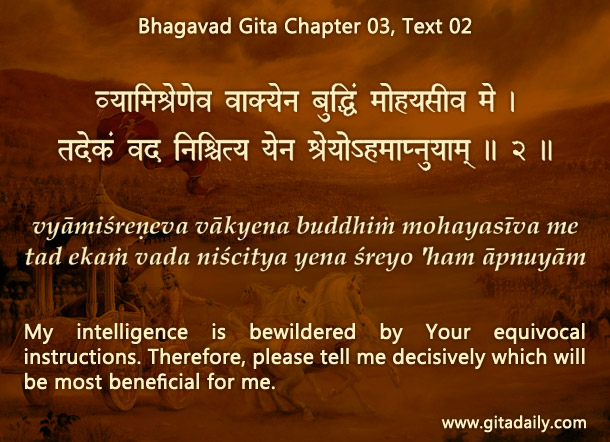When we hear someone speaking something confusing, we may infer that the speaker is confused. Such a situation though possible isn’t probable especially if the speaker is known to be wise and is respected as such by other people whom we know as wise. A much more probable situation is that we are confused – the problem lies not with the speaker’s message, but with our preconceptions.
A similar deferential approach can benefit us while studying the Bhagavad-gita. A cursory reading may make us infer that it is self-contradictory, incoherent and confusing. But its speaker is worshiped within the tradition to be the supremely wise person, God himself descended on the earth. And even outside the tradition, the Gita is esteemed as a work of profound wisdom. So a humbler approach towards Gita study is to be consider that we ourselves may be confused rather than assuming that the Gita is confusing.
In fact, the Gita itself demonstrates this approach through its original student Arjuna. After hearing the Gita’s second chapter, he asks Krishna (03.02) to give a clear instruction to clarify the confusing words spoken earlier. Gita commentators underscore the word mohayasiva: as if deluding. Arjuna acknowledges that Krishna’s words can never be deluding, but they seem so to him – that is, he doesn’t equate the confusing words with a confused speaker.
Without going too much into technicalities, Arjuna’s confusion arises from his preconception that he has only two options: action or renunciation. But Krishna has in the preceding chapter analyzed four levels of action: sinful action, pious action, detached action and renunciation. By humbly seeking clarification amidst the confusion instead of presumptuously dismissing the Gita as confused, Arjuna helps Krishna to lead him towards enlightenment. He also sets an example that can benefit us all in our own study of the Gita.
Explanation of article:


Leave A Comment